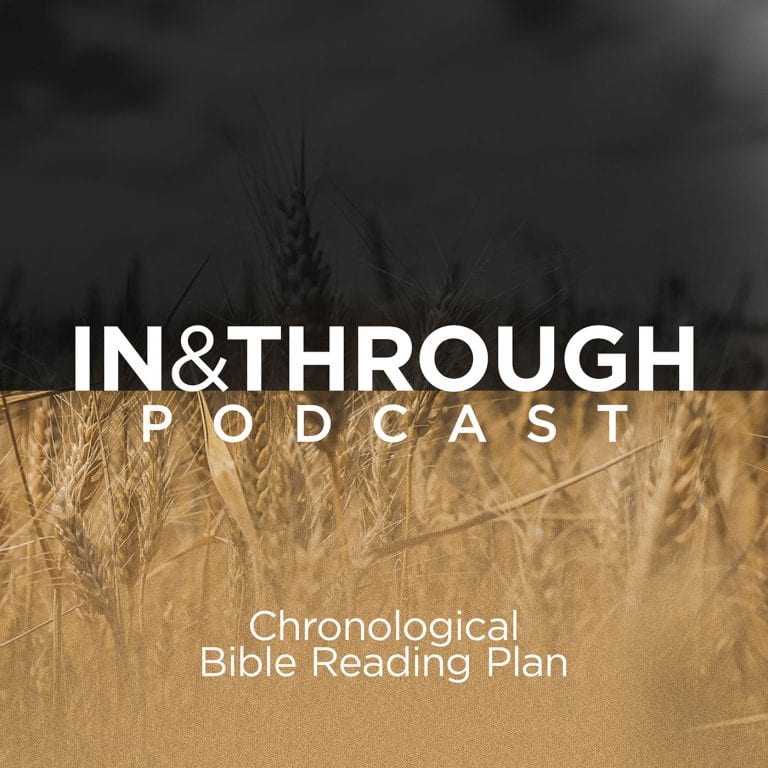Penal substitutionary atonement, the doctrine according to which Christ died to pay the penalty for our sins, is crucial to good news of the gospel. It is so central to the good news that Christians around the world proclaim it weekly by singing hymns like Stuart Townend and Keith Getty’s “In Christ Alone My Hope is Found.” The lyrics declare,
In Christ alone, who took on flesh,
Fullness of God in helpless babe!
This gift of love and righteousness,
Scorned by the ones He came to save.
‘Til on that cross as Jesus died,
The wrath of God was satisfied
For ev’ry sin on Him was laid
Here in the death of Christ I live.
For many, hymns like this inspire greater love towards God for Christ’s tremendous sacrifice on our behalf. I have personally seen Christ followers in Uganda, Liberia, Guatemala, and here at home brought to tears singing of Christ’s death for them. But for others such declarations do not inspire love, rather, they generate objections.
In her recent book, The Crucifixion, Fleming Rutledge lists 14 objections that have been leveled against the doctrine of penal substitution. The doctrine, objectors claim,
- Is crude
- Keeps bad company
- Is culturally conditioned
- Detaches Christ’s death from his resurrection
- Is incoherent
- Glorifies suffering and encourages masochistic behavior
- Is too abstract
- Depicts a vindictive God
- Is essentially violent
- Is morally objectionable
- Does not develop Christian character
- Is too individualistic
- Is controlled by an emphasis on punishment
- Ignores the New Testament’s narrative[1]
When such objections are brought up against the doctrine, especially in academic discussions, the point is often to discredit and eliminate it. Rutledge suggests that there are ulterior motives for why there is a trend among academics towards eliminating the doctrine. She proposes that, “a good deal of the opposition to the substitution motif is rooted in an aversion to its fundamental recognition of the rule of Sin and God’s judgement upon it.”[2]
Rutledge may or may not be right as far as academic objections to the doctrine are concerned. However, many of us aren’t tackling objections raised in theological journals. Instead we deal with the questions brought up by members of our congregations, campus ministries, or friends who are new to the faith. We face people who are genuinely confused by the doctrine of penal substitution.
At least, this was my experience working as a college minister. The college students I ministered to weren’t trying to undermine the doctrine, rather, they were trying to understand how this doctrine fit with their view of God. They asked questions like,
- How could the Father love Christ and still put him to death?
- Why did Jesus have to die, couldn’t God just forgive our sins?
- How can a perfectly just God punish Jesus who is perfectly righteous?
These are the questions of people with faith that was seeking understanding. As a PhD student whose work lies in the intersection of systematic, historic, and philosophical theology I have found that Jonathan Edwards is a helpful resource for answering these kinds of questions. His biblically saturated mind, analytic thought, and deep love for God are especially helpful when dealing with these questions in a pastoral context.
This isn’t to say that contemporary responses to these kinds of questions by philosophers and theologians aren’t helpful. They certainly are! However, the kind of responses offered by a pastor-theologian like Edwards are especially helpful for addressing the concerns of curious believers. Here is how Edwards can help answer three questions I have heard concerning penal substitution.
How could the Father love Christ and still put him to death?
Many people have a hard time seeing how penal substitution fits with the Father’s infinite love for the Son, but Edwards saw it as proof that the Father perfectly loves Christ. In Miscellanies no. 327(a) Edwards writes that the “highest glory” of the Trinity is the “infinite love” that exists between the Father and the Son.
Being a God who wants to put his glory on display to his creatures, for His sake and theirs, God does something which shows how deep the Father’s love is for the Son. What is this act? It is nothing less than the crucifixion.
Edwards explains that “the infinite love of the Father to the Son is thereby manifested, in that for his [the Son’s] sake he would forgive an infinite debt, would be reconciled with and receive into his favor and to his enjoyment those who had rebelled against him and injured his infinite majesty.”[3] In Miscellany no. 483 Edwards stresses the same thing: the atonement puts the Father’s perfect love for the Son on display for the world to see. Edwards writes,
The divine excellency of Christ and the love of the Father to him, is the life and soul of all that Christ did and suffered in the work of redemption. Indeed, men have their sins pardoned for the sake of the divine excellency of Christ, and we are accepted into God’s favor and have a title to eternal life for the sake of Christ, because the Father infinitely loves him.
To our modern ears this might sound surprising but to Edwards it was only natural to think that it is precisely because of Father’s perfect love for the Son that God devised a way save humanity from sin. As Brandon Crawford writes in his recent book, Jonathan Edwards on the Atonement, “It is the Father’s love for the Son that prompts him to reconcile with those sinners for whom Christ died.”[4]
Why did Jesus have to die, couldn’t God just forgive our sins?
According to Edwards God’s retributive justice needed to be satisfied. That Christ’s death satisfies God’s retributive justice prompted Edwards to write that “the satisfaction of Christ consists in his answering those demands that the law laid on man that were consequent on the breach of the law, which was suffering the penalty of the law.”[5] But Edwards did not think only in terms of retributive justice, he also had rectoral justice in mind.
Rectoral justice “is that aspect of divine justice whereby God rightly governs the cosmos in accordance with his moral law.”[6] According to Edwards, God is glorified when his attributes (e.g. wisdom, justice, holiness, love) are put on display for creatures to see.
If creatures failed to see God’s rectoral justice, God would not be fully glorified. In his infinite wisdom God devised a plan to redeem sinners—the death of the Son on their behalf—that would put this aspect of God’s justice on display. Thus, when Christ dies as our penal substitute two things happen: 1) God’s retributive justice is fulfilled and 2) God’s rectoral justice is displayed so that creation gets the privilege of glorying God for this particular attribute.
How can a perfectly just God punish Jesus who is perfectly righteous?
Most people assume that punishing an innocent person is unjust. So how much more unjust would it be for God to punish a perfectly righteous person! Traditionally God punishing Christ on our behalf has been defended by making use of the concept of imputation. Charles Hodge explains that “to impute is to ascribe to, to reckon to, to lay to one’s charge.”[7] William Lane Craig writes concerning the imputation view of atonement that “although Christ did not himself commit the sins in question, God chose to treat Christ as if he had done those acts.”[8]
Edwards certainly believed in imputation, yet Edwards is also clear that imputation is grounded in Christ’s union with believers. Thus, he explains,
Now the foundation of the propriety of this imputation… seems to lie in these two things: in Christ’s union with God, and his union with men. It would not be proper that the righteousness of any person should be accepted by God for another, but a person that was one with God; nor would it be proper that it should be accepted for any person, but only a person that he is one with.[9]
It was but fair, and what justice required, that seeing Christ would so unite himself by love to sinners that had deserved wrath, that they might be partakers of the Father’s love to him and so they be screened and sheltered, that he himself should receive the Father’s wrath to them. That love of Christ which united him to sinners, assumed their guilt upon himself.[10]
The reason that Christ can assume the punishment for our sin, according to Edwards, is that Christ is seen by the Father as being one with us. For Edwards this is not just a legal declaration—though it is certainly that—it is also a real union. God, according to Edwards, has the power to bring about a real union between two things simply by declaring that two separate things ought to be treated as one.
This, Edwards explains, is how Adam’s sin is imputed to us; it is also how our sins are imputed to Christ and his righteousness is imputed to us.[11] So, to the question, “How can God justly punish Christ who is innocent?” Edwards responds by saying that although Christ is innocent, our guilt is transferred to him in virtue of God’s declaration that we are united to Christ.
Conclusion
For Edwards, like many of us, penal substitution occupied a central place in the gospel; he once wrote that penal substitution “is as it were the center and hinge of all doctrines of pure revelation.”[12] His understanding of the penal substitution has the potential to help those struggling to understand the doctrine see the wisdom, glory, and love of our savior more clearly.
[1] Fleming Rutledge, The Crucifixion: Understanding the Death of Jesus Christ (Grand Rapids: Eerdmans, 2015), 489–506.
[2] Rutledge, The Crucifixion, 506.
[3] Jonathan Edwards, The Works of Jonathan Edwards, vol. 13: The “Miscellanies,” Entry Nos. a-z, aa-zz,1-500, ed. Thomas Schafer (New Haven, CT: Yale University Press, 1994), 406. Misc. 327(a).
[4] Brandon Crawford, Jonathan Edwards on the Atonement: Understanding the Legacy of America’s Greatest Theologian (Eugene: Wipf and Stock, 2017), 131.
[5] Jonathan Edwards, The Works of Jonathan Edwards, vol. 9: A History of the Work of Redemption, ed. John Wilson (New Haven, CT: Yale University Press, 1989), 305.
[6] Oliver Crips and Kyle Strobel, Jonathan Edwards: An Introduction to His Thought (Grand Rapids: Eerdmans, 2018), 141.
[7] Charles Hodge, Systematic Theology, vol. 3, Soteriology (Peabody, Mass: Hendrickson, 2011), 144.
[8] William Lane Craig, The Atonement (New York: Cambridge University Press, 2018), 61–2.
[9] Jonathan Edwards, The Works of Jonathan Edwards, vol. 14: Sermons and Discourses: 1723–1729, ed. Kenneth P. Minkema (New Haven, CT: Yale University Press, 1997), 401.
[10] WJE 13:526
[11] Jonathan Edwards, The Works of Jonathan Edwards, vol. 3: Original Sin, ed. Clyde Holbrook (New Haven, CT: Yale University Press, 1970), 405.
[12] Jonathan Edwards, The Works of Jonathan Edwards Online, vol. 27: “Controversies” Notebook, ed. Jonathan Edwards Center (New Haven, CT: Yale University Press, 2008).























